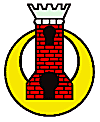
The International Order of the Alhambra was founded in 1904, in Brooklyn, New York, as the recreational wing of the Knights of Columbus, though it also dedicates itself to the preservation of Roman Catholic historical sites and to charitable works. It exists in the United States, Canada, Mexico, Japan, and the West Indies. Members must be Third- and Fourth-Degree members of the Knights of Columbus, which is to say that they must also be male, Catholic, and over 18. Membership is by invitation only, and there were 9,500 members in 1989.
The International Order of the Alhambra was founded by a small gr6up of Catholic men in Brooklyn and is to the Knights of Columbus what the Shriners are to the freemasons, though it has never been formally recognized by the Knights of Columbus.
Despite the lack of recognition, many princes of the Church are or have been members, including Pope Paul VI and Pope John Paul II. Even with such patronage, membership has declined, from over 13,000 in the 1960s, to about 11,000 in 1978, and under 10,000 by the early 1990s.
The three major purposes of the order are:
To promote social and fraternal association among its members,
To commemorate Catholic historic places, persons or events of international significance,
And to assist and provide means to further the cause of the handicapped and mentally retarded.
The order’s initiation rite is based on the Christian reconquest of Spain, and it takes its name from Alhambra, the surrender of which in 1492 marked the end of the Moorish occupation, which had begun in 711. This is the only one of the degrees that is worked, but it is very elaborate; only the larger “caravans” (lodges) are likely to have all the paraphernalia and costumes required, though the Baltimore headquarters will rent initiation equipment to smaller caravans who wish to carry out an initiation.
The regalia is based on that of the Shriners; in parades, Alhambra members (Sir Nobles) wear colorful pseudo-Moorish dress and are traditionally accompanied by camels. Most caravans have names derived from Moorish Spain, including Salamanca, Algeciras, Guzera, and Zamora; the first caravan, which is still in existence, was called Abd er Rahman. In 1990 there were about 200 caravans, which are largely autonomous; the ruling body of a caravan is an elected Grand Divan headed by a Grand Commander. Overall administration is carried out by a 15-member Council of Viziers (the Supreme Divan) elected at a biennial convention.
The international constitution and by-laws is called Al-Sunna and consists of a mixture of general regulations and lofty aspirations. (The use of the term “Al-Sunna” could be deeply offensive to a devout Moslem. Al-Sunna (literally “the form” or “the way”) is an adjunct to al-Quran (the Koran) based on traditions of the words and deeds of the Prophet and forms the basis of Islamic law for the Sunni tradition.)
The organization has contributed handsomely to programs for the mentally retarded and the physically handicapped, often with special emphasis on the needs of children, again like the Shriners, it provides an opportunity for its members to engage in often boisterous jollifications while contributing to and raising money for good works.